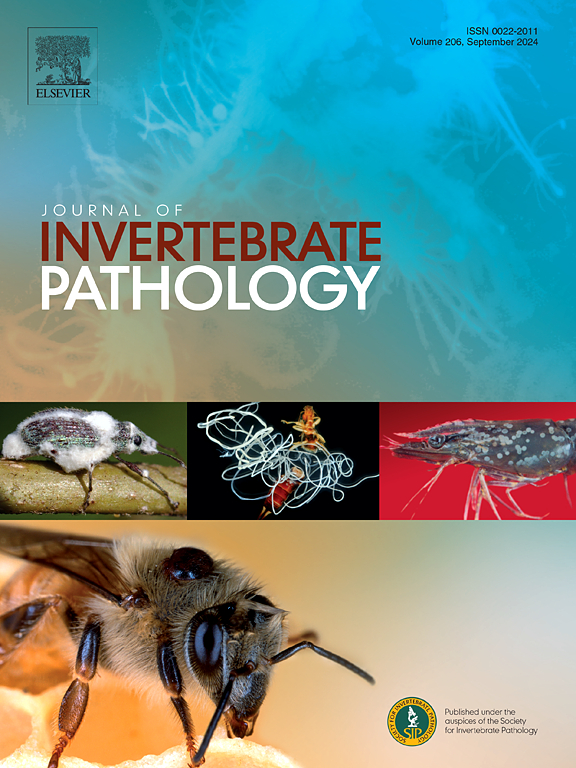Vibrio plasmids harboring vhv gene associated with shrimp translucent post-larvae disease: Coexistence of two types of T4SS and multiple transposons
IF 3.6
3区 生物学
Q1 ZOOLOGY
引用次数: 0
Abstract
Translucent post-larvae disease (TPD), known as “glass post-larvae disease” is an emerging threat characterized by high mortality rates and severe economic losses. The pathogenesis of TPD has been linked to the Vibrio high virulent (vhv) gene by virulent strains of V. parahaemolyticus. This study presents a comparative genomic analysis of 16 Vibrio plasmids carrying the vhv gene, associated with TPD in shrimp. Specifically, the analysis identified secretion systems and transposons within these plasmids, revealing that all 16 harbor the Type IV Secretion System (T4SS), with distinct T4SS_typeT and T4SS_typeF gene clusters in seven and nine plasmids, respectively. And it was found that the two types of plasmids can coexist within a single bacterial strain. A diverse array of transposons, classified into seven families, was also identified. The study unveils the genetic intricacies of two plasmid types carrying the vhv gene, which are implicated in TPD pathogenesis. The findings underscore the importance of these plasmids’ classification based on their secretion systems and highlight their genetic diversity and the presence of transposons, key factors in bacterial adaptability and virulence. This understanding is crucial for developing strategies to mitigate TPD’s impact on shrimp aquaculture and ensure food safety.
携带vhv基因的弧菌质粒与虾半透明幼虫后疾病相关:两种类型T4SS和多个转座子的共存
半透明幼虫病(TPD),又称“玻璃幼虫病”,是一种以高死亡率和严重经济损失为特征的新兴威胁。TPD的发病机制与副溶血性弧菌毒株的高毒弧菌(vhv)基因有关。本研究对携带与虾TPD相关的vhv基因的16个弧菌质粒进行了比较基因组分析。具体来说,分析确定了这些质粒中的分泌系统和转座子,揭示了所有16个质粒中都含有IV型分泌系统(T4SS),分别在7个质粒和9个质粒中具有不同的t4ss_typepet和T4SS_typeF基因簇。结果发现,这两种质粒可以在同一菌株中共存。还发现了一系列不同的转座子,分为七个家族。该研究揭示了携带vhv基因的两种质粒类型的遗传复杂性,这与TPD的发病机制有关。这些发现强调了基于其分泌系统对这些质粒进行分类的重要性,并强调了它们的遗传多样性和转座子的存在,转座子是细菌适应性和毒力的关键因素。这一认识对于制定减轻TPD对对虾养殖影响和确保食品安全的战略至关重要。
本文章由计算机程序翻译,如有差异,请以英文原文为准。
求助全文
约1分钟内获得全文
求助全文
来源期刊
CiteScore
6.10
自引率
5.90%
发文量
94
审稿时长
1 months
期刊介绍:
The Journal of Invertebrate Pathology presents original research articles and notes on the induction and pathogenesis of diseases of invertebrates, including the suppression of diseases in beneficial species, and the use of diseases in controlling undesirable species. In addition, the journal publishes the results of physiological, morphological, genetic, immunological and ecological studies as related to the etiologic agents of diseases of invertebrates.
The Journal of Invertebrate Pathology is the adopted journal of the Society for Invertebrate Pathology, and is available to SIP members at a special reduced price.

 求助内容:
求助内容: 应助结果提醒方式:
应助结果提醒方式:


